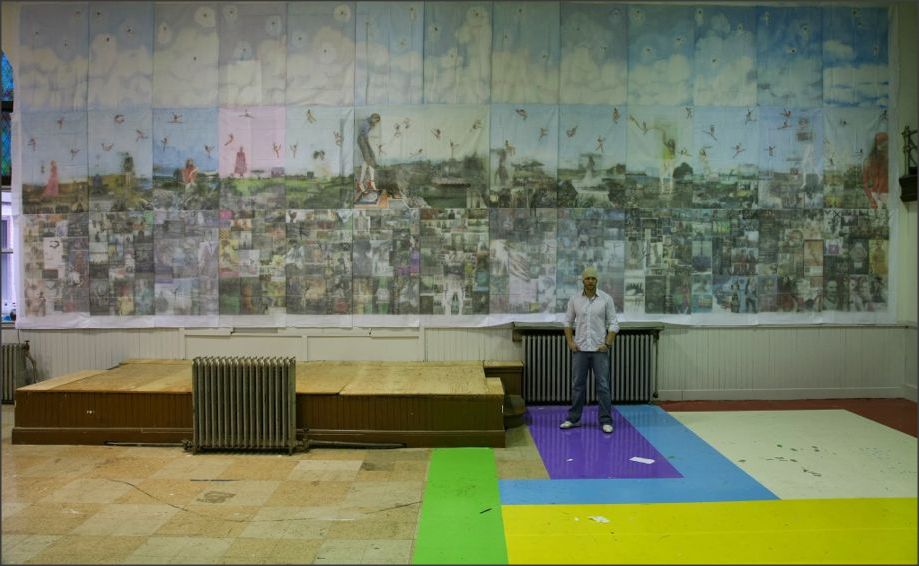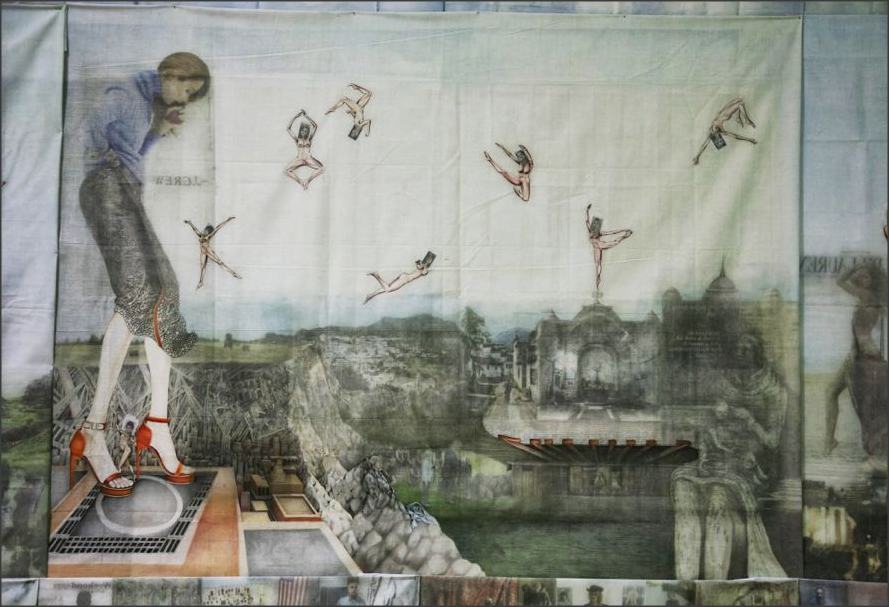
via
Slate.
Jesse Krimes was in federal prison for 70 months. A year after graduating with a degree in Studio Art from Millersville U.
He created a mural on prison sheets, using hair gel as a transfer medium to capture images from the New York Times, coloring them with pencil. He would mail the sections to his girlfriend as he completed them. In total he created 39 sections.
Quote:
In prison there was no TV or Internet, but he had access to books and newspapers. He reread philosophy texts he had studied in college and started reading the New York Times, finding himself emotionally drawn to dreamy images of idealized vacation destinations in the travel section. But he was also struck by how often news stories of man-made and natural disasters occurring in those same places depicted an alternate reality. And again by the ubiquitous ads for consumer goods that both entrap the masses in self-imposed symbolic prisons of their own and foster a cult of materialism he says played a role in motivating his own errant choices.
Krimes began plotting his mural, which would attempt to grapple with those contradictions. He clipped images and traced a series of naked dancing women by hand using colored pencils, based on photos of ballerinas in the arts section. He bought hair gel from the prison commissary and was allowed to order canvas from an art catalog, but he never intended to make his great prison masterwork on such a conventional material, procuring clean prison sheets from a friend who worked in the laundry room to use as his primary material instead.
|
